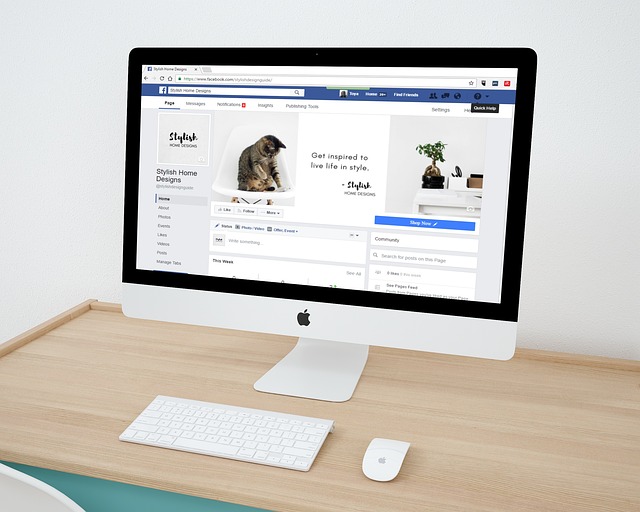
Your personal brand is what sets you apart. Here are some tips for crafting a unique brand that will make you stand out.
A brand is what makes a product or service different from the competition. It’s how customers view your offerings and is more than just a logo or slogan. Crafting a successful strategy means combining your company’s values, mission, and vision into a single identity that resonates with your target audience.
Conduct research to learn what sets you apart. Your messaging and visuals must show your brand’s personality and attract customers. You need consistency when promoting your brand across channels such as social media, your website, and packaging design.
Invest in quality content that matches your goals and value. Engaging stories and informative copywriting can get people talking about your brand. Also, keep an eye on reviews for areas needing improvement and to help shape your conversational voice.
Standing out is like being the only sober person at a party. It’s hard, but worth it!
Importance of Crafting a Unique Brand
To establish a compelling brand identity with a strong voice and message that resonates with your target audience, creating a unique brand is crucial. In order to achieve this, you need to focus on three key factors: creating a memorable brand identity, establishing a brand voice and message, and understanding your target audience and competition. These sub-sections will provide solutions to help craft a strong, lasting brand that stands out in your industry.
Creating a Memorable Brand Identity
Creating a one-of-a-kind brand is essential for any business. It helps to mark who you are and what makes you different from others. Smart businesses know that the key to making a memorable brand identity lies in creating a visual representation that clicks with their target audience. It’s the first impression customers have of you.
To come up with a brand identity, it’s key to understand your target audience, their needs and preferences. This info guides everything from the design elements of your brand identity, like colors, logos, taglines, and messaging strategy. All your brand’s platforms should be consistent, such as social media pages, website design, business cards, and packaging.
The success of your brand hinges on its originality and uniqueness. A unique brand generates loyalty and sets you apart from competitors, making customers more likely to choose you over other options in the market.
Today’s competitive environment means crafting an authentic and memorable branding strategy is important for any business wanting to stand out. Not differentiating yourself can lead to lost traction or even worse – lost clients.
So take the reins today! Make sure you craft a captivating branding strategy that puts you ahead of the pack. Your brand voice should be like a fingerprint – unique and recognisable, but not leaving any mess on your keyboard.
Establishing a Brand Voice and Message
It’s essential to make a unique brand. Create a voice and message that your target audience connects with. Make compelling messages to stand out from competitors. Your brand’s voice should match your core values and truly reflect your target audience.
Consistency across channels is key. This includes social media, website content and advertising campaigns. They should represent your brand and give clear guidelines for customers.
Data analytics can help understand customer preferences. This supports a successful branding strategy. A clothing manufacturer used witty copywriting to emphasize product categories. This increased sales revenue.
Knowing your target audience is vital. Knowing the competition is like understanding where the landmines are.
Understanding Target Audience and Competition
Understanding target audience and competitors is essential for building a unique brand identity. Analyze preferences and market trends to tailor products and services to match customer expectations. Offer better value than competitors for loyalty and distinct market presence.
Take into consideration customers’ tastes and competitors’ offerings. Offering bespoke solutions and enhanced value proposition helps create an emotional connection with customers, making it hard to duplicate. This allows businesses to build lasting relationships and gain market share.
Competitive landscape demands understanding customers. Monitor response times, innovation and competition. Create an effective strategy around target audience and competition, leveraging technology and marketing techniques.
Crafting a unique brand is like creating a fingerprint – it may look similar, but it’s yours.
Tips and Strategies for Crafting a Unique Brand
To craft a unique brand with tips and strategies, the solution lies in conducting market research, developing a brand personality, creating a consistent brand experience, leveraging social media and influencer partnerships, and measuring and adjusting brand success metrics. These sub-sections will help you create a distinct identity and increase brand recognition in your target audience.
Conducting Market Research
Analyze the consumer market to gain valuable insights. Doing this can help you identify gaps or niches in the industry. Understanding consumer behaviors, preferences, and needs will differentiate your brand from competitors. Evaluate the competition to create a unique brand position.
Research industry trends and data to determine market demand. Identify existing challenges of your target audience. Personalizing messages based on their struggles builds trust with potential customers.
Conduct market research through social listening and customer feedback channels. Use surveys or focus groups for firsthand information about consumer needs and preferences.
One company examined user comments on a competitor’s product. This gave them an opportunity to create a highly demanded feature that was missing from conventional tools. It made it easier for the targeted audience and differentiated the company’s product.
Personality is key when it comes to branding. People tend to remember the quirks and flaws that make us unique.
Developing a Brand Personality
Designing a Unique Brand Identity
Forming a brand personality is essential for forming a strong brand identity that resonates with your target audience. Brand personality encapsulates your unique characteristics, values, and attributes that set you apart from the competition. To develop a distinctive brand personality, first do research to understand your audience’s needs and preferences. Then, use this knowledge to create a consistent voice and branding guidelines across all communication channels. Finally, make sure your brand’s personality aligns with your business goals.
To create an authentic and powerful brand personality, don’t imitate other brands or adopt trends without considering its impact on your goals and customer relationships. Incorporate elements of storytelling into your brand message to emotionally connect with your audience. Use visual elements like color, typography, and imagery to reinforce your brand’s messaging in marketing materials.
Creating an impactful brand identity is not easy, but it’s important for defining your business’s identity. By taking the time to learn about your target audience and crafting messaging that aligns with those insights, you’ll be able to form a lasting relationship with them. Ignore the importance of creating a multi-dimensional, impactful brand identity at your own peril! Consistency is key, unless you twist locks. Then, it’s a whole other story.
Creating a Consistent Brand Experience
Maintaining Cohesive Brand Identity:
Consistency is essential for a unique brand. Create guidelines for design, messaging and tone of voice for all platforms. Make sure visuals in advertisements and marketing materials reflect your brand’s personality. Keeping messaging consistent builds a recognizable voice.
Utilize branded assets like color palettes and logos to reinforce identity. Regularly using these assets builds a connection with your audience and increases brand recognition.
Pro Tip: Create a style guide for all branding decisions. This can be easily referenced by the team. #influencerstrategies
Leveraging Social Media and Influencer Partnerships
Harness the power of social media and influencer collaborations to boost branding. Connect with influential people in your niche and have them endorse or showcase your brand on various social media platforms. The aim? Create a buzz and reach out to potential customers.
Leverage social media to gain attention, generate leads and increase revenue. Partnering with influencers boosts your reach and grows your audience base. Combine both tactics and take your brand outreach game up a notch!
Potential customers are influenced by their friends or people they look up to. So use social media efficiently alongside influencer marketing strategies. It’s not just about likes or visibility – endorsements need to be relevant and align with your brand’s UX voice.
Many successful brands have seen exponential growth without breaking the bank. Engagement builds trust which helps grow a loyal audience. Glossier and Becca Cosmetics started small and now have thousands of happy customers who proudly advocate their products.
These methods are essential for achieving competitive advantage in today’s digital era. Consumers demand authentic connectivity from modern-era brands operating online. Measuring brand success? Sometimes the numbers are great, other times you just want to break the scale and drown yourself in ice cream.
Measuring and Adjusting Brand Success metrics
Evaluating and modifying brand efficacy requires analyzing Brand Performance Indicators (BPIs). These metrics are based on the business type, but usually include customer satisfaction, market penetration and user retention rates. By assessing these metrics regularly, managers can spot weak points in their strategies and make changes.
To get an accurate BPI evaluation, it’s important to look at quantitative data (sales figures) and qualitative data (e.g. focus group feedback). BPIs give valuable insights to support decision-making and create new strategies.
Businesses should pay attention to Customer Lifetime Value (CLV). This metric shows the value each customer brings over time. CLV helps forecast profitability and demonstrates how customers connect with their purchases – this allows brands to tailor campaigns, products or services to better engage customers.



